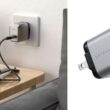Imagine listening to your favorite song and experiencing it in a way that feels perfectly tailored to your ears. This is what Adaptive EQ aims to achieve by dynamically adjusting the sound to match the unique shape of your ears and the listening environment. Adaptive EQ is an advanced audio technology that enhances your listening experience by providing a more consistent and rich sound quality. Whether you’re in a quiet room or a noisy café, Adaptive EQ ensures that your audio remains clear and balanced. In this guide, we’ll delve into what Adaptive EQ is, how it works, and the numerous benefits it offers.
What is Adaptive EQ?
Adaptive EQ is an innovative audio technology that continuously adjusts the frequency response of your headphones or earbuds to ensure optimal sound quality. Unlike traditional EQ, which requires manual adjustments to the sound profile, Adaptive EQ uses real-time analysis to automatically fine-tune the audio based on your environment and the unique shape of your ears.
How It Works: Adaptive EQ employs a combination of microphones and advanced algorithms to analyze the audio signal and the acoustic characteristics of your ear. The technology performs real-time spectral analysis, identifying any discrepancies or imbalances in the sound. It then dynamically adjusts the EQ settings to correct these issues, ensuring that you receive the best possible audio experience.
Example of Adaptive EQ in Action: Consider listening to music in a noisy environment, like a busy café. The ambient noise can interfere with the clarity and balance of the sound. Adaptive EQ detects these changes and compensates by adjusting the EQ settings, enhancing certain frequencies to maintain a clear and balanced audio output. This results in a consistent and enjoyable listening experience, regardless of the surrounding noise levels.
Adaptive EQ technology is particularly beneficial for users who frequently switch between different environments, as it ensures that the audio quality remains high without the need for manual adjustments. This seamless adaptation makes Adaptive EQ a valuable feature in modern audio devices.
Also Read: 25 of The Coolest & Funniest AirPods Engravings Ideas
Compatible Devices
To fully utilize the benefits of Adaptive EQ, it’s essential to have the right devices that support this advanced audio technology. Here’s a quick overview of the devices that are compatible with Adaptive EQ and the necessary firmware or software requirements.
AirPods Pro (1st and 2nd generation): These devices use Adaptive EQ to adjust the low and mid-frequencies in real time based on the fit and seal of the ear tips.
AirPods Max: Equipped with Adaptive EQ, AirPods Max uses computational audio to measure the sound signal delivered to your ears and adjust accordingly.
(3rd generation) AirPods: This model also features Adaptive EQ to provide a customized listening experience.
Beats Fit Pro: Similar to AirPods, Beats Fit Pro utilizes Adaptive EQ to ensure optimal sound quality tailored to the user’s ear shape.
Tip: Regularly updating your devices to the latest firmware and software versions is crucial to maintain compatibility and enjoy the latest enhancements that come with Adaptive EQ. These updates often include performance improvements and new features that can further enhance your listening experience.
Also Read: How to Identify What AirPods Model You Have | Handy Guide
How to Enable and Use Adaptive EQ
Enabling and using Adaptive EQ on your compatible devices is straightforward and enhances your listening experience by tailoring the sound to your environment and ear shape.
Here’s how you can enable Adaptive EQ on various Apple devices:
1. Using iPhone/iPad
Adaptive EQ is automatically enabled on your AirPods Pro (1st and 2nd generation), AirPods Max, and AirPods (3rd generation) when connected to an iPhone or iPad running iOS 14 or later. There are no manual settings required to turn it on; it works seamlessly in the background.
- Ensure your AirPods are paired with your iPhone or iPad.
- Go to Settings > Bluetooth.
- Tap the information icon (i) next to your AirPods.
- Ensure your AirPods are running the latest firmware.
2. Using Mac
Adaptive EQ works with AirPods Pro and AirPods Max when connected to a Mac running macOS Big Sur 11.1 or later. Like with the iPhone and iPad, Adaptive EQ is automatically enabled.
- Ensure your AirPods are paired with your Mac.
- Go to System Preferences > Bluetooth.
- Click on your AirPods in the device list to see details and ensure they are up to date.
3. Using Apple TV
To enjoy Adaptive EQ with your Apple TV 4K running tvOS 14 or later, connect your compatible AirPods. Adaptive EQ will automatically function in the background to optimize your listening experience.
- Ensure your AirPods are paired with your Apple TV.
- Open Settings > Remotes and Devices > Bluetooth.
- Select your AirPods to view details and firmware versions.
Check Out Awesome AirPods Cases and Cover
The AirPods get dusty, greasy, and dirty as soon as you remove them from the box and no wonder you can see scratches on them in just a few days. It is always best to carry an AirPods case or cover; here are some of the options that are definitely not a bore.
Common Issues and Troubleshooting
Even though Adaptive EQ is designed to enhance your listening experience seamlessly, you might occasionally encounter some issues. Here are some common problems and their solutions to help you troubleshoot effectively:
Issue 1: Adaptive EQ Not Working
Sometimes, users might feel that Adaptive EQ is not functioning as expected. This can be due to several reasons, including connectivity issues or outdated firmware. Here are a few workarounds to solve this issue,
- Ensure your device and AirPods are compatible with Adaptive EQ. Refer to the compatible devices section for more details.
- Make sure your AirPods and the connected device have the latest firmware and software updates. Firmware updates are often automatic but can be checked manually in the device settings.
- Disconnect and reconnect your AirPods via Bluetooth settings to refresh the connection.
- Restart your iPhone, iPad, Mac, or Apple TV to resolve any temporary glitches that might be affecting Adaptive EQ.
Also Read: Spatial Audio on AirPods: What is it and How to Enable it?
Issue 2: Uneven Sound Quality
If the sound quality seems uneven or imbalanced, it might be due to the ear tips not fitting properly or dirt obstructing the microphones. While you can get a few accessories to make things easier, here are a few things I recommend,
- Use the Ear Tip Fit Test on your iPhone to find the best size ear tips for a proper seal. A good fit is crucial for Adaptive EQ to work effectively.
- Dirt or debris can obstruct the microphones and affect sound quality. Clean your AirPods gently with a soft, dry, lint-free cloth.
- Place your AirPods in their case, press and hold the setup button until the status light flashes amber, then white. Reconnect your AirPods to your device.
Issue 3: Audio Quality Issues in Noisy Environments
Adaptive EQ is designed to adjust to different environments, but sometimes, it might not perform well in very noisy settings.
- Ensure your AirPods are within range and free from obstructions.
- Verify that all relevant settings for Adaptive EQ and noise cancellation are enabled in the Control Center or Bluetooth settings.
- Sometimes, extremely noisy environments might overwhelm the adaptive features. Moving to a slightly quieter area can help the EQ perform better.
Also Read: MagEZ AirPods Case Review: Luxury Touch, Protection & More
Issue 4: Delay in Sound Adjustment
Experiencing a delay in sound adjustments can be due to connection issues or the need for a firmware update.
- Delays might be due to outdated firmware. Update your AirPods and connect the device to the latest software.
- Keep your device and AirPods within close proximity to avoid connection issues.
- Restart your AirPods and the connected device to clear any temporary glitches.
Most Frequently Asked Questions on Adaptive EQ on AirPods
Adaptive EQ is an advanced audio technology that dynamically adjusts the frequency response of your headphones or earbuds to provide the best possible sound quality.
Adaptive EQ is supported on AirPods Pro (1st and 2nd generation), AirPods Max, AirPods (3rd generation), and Beats Fit Pro. These devices use the technology to enhance audio quality by adapting to the user’s ear shape and environment.
Adaptive EQ is designed to run automatically, and there is no option to disable it in the settings. It continuously works in the background to optimize the sound based on your environment and ear shape.
Uneven sound quality can result from an improper fit or dirt obstructing the microphones. Ensure a snug fit using the Ear Tip Fit Test on your iPhone, and clean your AirPods regularly to maintain optimal performance.
Yes, Adaptive EQ works seamlessly with other audio features like Active Noise Cancellation and Transparency Mode. This integration ensures that you receive a comprehensive and versatile audio experience across different environments.
Adaptive EQ, as described, is specific to Apple devices like AirPods and Beats headphones. Some Android devices may have their own versions of adaptive audio technologies, but these are not the same as Apple’s Adaptive EQ.
Before You Leave
Get Our Prime Content Delivered to your Inbox for Free!! Join the Ever-Growing Community… Right Now.
Give this article a quick share,
Also Read: How to Switch: Noise Cancellation & Transparency Modes on AirPods
Wrapping up: Adaptive EQ on AirPods, Make the Most for your Listening
Adaptive EQ is a remarkable technology that revolutionizes how we experience audio by dynamically adjusting the sound to fit the unique shape of your ears and the environment you’re in. This ensures a consistently rich and immersive audio experience, whether you’re listening to music, watching a movie, or making a call.
By understanding how Adaptive EQ works and leveraging its benefits, you can significantly enhance your listening experience. From maintaining balanced sound quality across different environments to providing personalized audio tailored to your specific needs, Adaptive EQ makes modern audio devices smarter and more responsive to your auditory preferences.
Hopefully, this guide came in handy to help you understand how Adaptive EQ audio works and how you can enable it for your AirPods. Share your thoughts with us through the comments section below. Also, if you like what you read on Tiny Quip, share a word with your friends on social media. You can follow us on X, Facebook, and Telegram to show your extended support.










